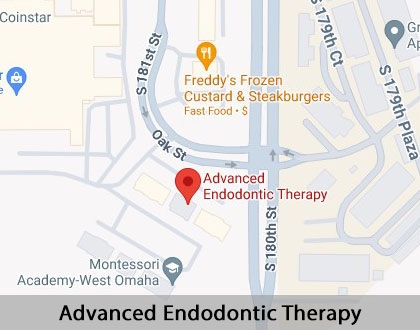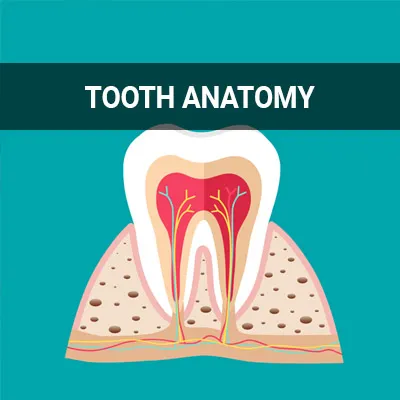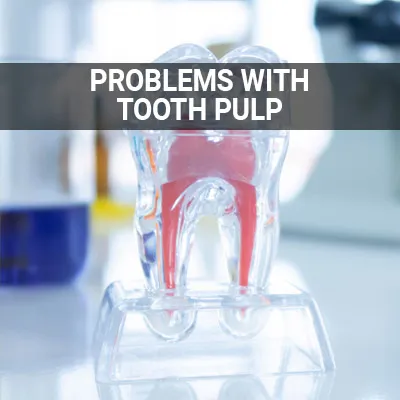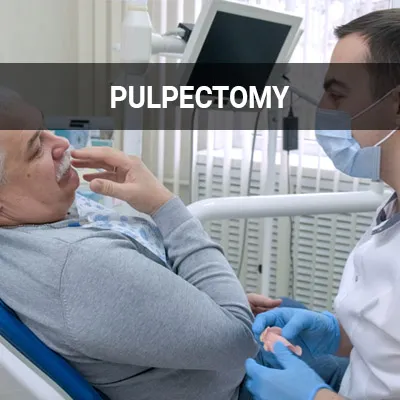Pulpectomy vs. Root Canal Omaha, NE
In most cases, a pulpectomy is performed to save primary teeth, while a root canal is performed to save permanent teeth. These treatments become necessary when a tooth becomes infected. It helps to understand the differences between a pulpectomy and a root canal when patients might need one or the other, and the aftercare each requires.
If you are having tooth pain and think you may need either procedure, we can help. Contact Advanced Endodontic Therapy in Omaha to learn more about our pulpectomy and root canal services. Call us at (402) 403-6988 for more information or to schedule an appointment.
Pulpectomy Explained
Endodontists typically complete a pulpectomy during one dental visit. Before the procedure, the dentist takes an X-ray of the tooth to get a better look and detect possible infection. After the patient's tooth and surrounding area become completely numb from a local anesthetic, the endodontist drills a hole in the tooth to remove the pulp. Next, the endodontist cleans and disinfects the tooth before injecting a rubber-like filling. The final step is to place a temporary filling on top.
Most pulpectomies are performed as a baby root canal on baby teeth. The temporary filling is sufficient since the tooth will eventually fall out. Moreover, the body absorbs the filling that was inside the baby tooth before its replacement pushes through.
“Most pulpectomies get performed as a baby root canal on baby teeth.”
Root Canal Explained
The patient receives an X-ray and local anesthetic in preparation for a root canal. A root canal is performed in stages. The root canal is typically performed on adult teeth and requires more than one office visit. The first step of this procedure is a pulpectomy. During the first appointment, the endodontist completes the pulpectomy and sends the patient home. The patient returns to the dentist as soon as possible to remove the temporary filling and receive a crown or permanent filling.
“The root canal is typically performed on adult teeth and requires more than one office visit.”
When a Pulpectomy Is Needed
A child with a damaged or decayed baby or milk tooth might undergo a pulpectomy to preserve it. While it might make sense to simply get rid of the baby tooth, there are reasons to save it. For instance, losing a milk tooth too soon might make chewing difficult. Premature removal can also create speech challenges, possibly leading to communication problems later on. Also, tooth gaps can cause misalignment of permanent teeth.
“A child with a damaged or decayed baby or milk tooth might undergo a pulpectomy to preserve it.”
Check out what others are saying about our dental services on Yelp: Pulpectomy vs. Root Canal in Omaha, NE
When a Root Canal Is Needed
A root canal is needed when a tooth's pulp becomes infected from a deep cavity, fracture, injury, or repeated dental procedure. In many cases, a root canal can save the tooth. Endodontists primarily perform this procedure on adults.
A root canal often becomes necessary when a patient's teeth are sensitive to cold or hot or when chewing and biting become painful. A root canal is also generally required when pimples, swelling, or darkening appear on the gums. Some patients have this procedure if they have a deep cavity or experience problems from a previous filling.
“A root canal often becomes necessary when a patient’s teeth are sensitive to cold or hot or when chewing and biting become painful.”
Questions Answered on This Page
Q. What happens during a pulpectomy?
Q. What happens during a root canal?
Q. When would a patient need a pulpectomy?
Q. When does a patient need a root canal?
Q. How do I care for my teeth after a pulpectomy or root canal?
People Also Ask
Q. What causes tooth pulp damage?
Q. How is damaged pulp treated?
Q. What happens during a pulpectomy?
Q. What are the two types of pulpitis?
Aftercare
Children recovering from a pulpectomy should avoid chewing or eating until the anesthesia wears off. The endodontist might prescribe antibiotics to ward off infection. They might also recommend an over-the-counter pain medication to manage pain and swelling.
Regular brushing and flossing are essential to maintain dental health. Parents should contact their child's dentist if they notice pain that increases or lasts for more than a few days. They should also watch for signs of infection, inflammation, an inability to chew, or oversensitivity to cold or hot.
Root canal aftercare ensures proper healing. As with a pulpectomy, the patient might take antibiotics to prevent infection. The endodontist may prescribe pain medication.
The treated tooth will likely be vulnerable to dental issues, so healthy hygiene habits remain necessary to sustain oral health. Dental check-ups can also help pinpoint complications that might arise from the root canal, such as swelling, increased pain, temperature sensitivity, or inability to heal.
“The treated tooth will likely be vulnerable to dental issues, so healthy hygiene habits remain necessary to sustain oral health.”
Frequently Asked Questions
Q. Who typically gets a pulpectomy vs. a root canal?
A. Most pulpectomies are performed on baby teeth. Because the procedure includes the placement of a temporary filling, a permanent crown is not necessary since the tooth will fall out. Adults usually receive root canals, which require an office visit to replace the temporary filling with a crown.
Q. What kind of dentist performs a pulpectomy and root canal?
A. Endodontists typically perform pulpectomies and root canals. These providers are dentists who received training in treating tooth pulp. Less than 3% of all dentists specialize in endodontics.
Q. Is one procedure more preferable than the other?
A. The choice between a pulpectomy and a root canal usually hinges on whether the affected tooth is a baby tooth or permanent. A pulpectomy is more convenient because it typically requires only one office visit. A root canal generally costs more because of the additional crown or permanent filling.
Q. How much do a pulpectomy and root canal cost?
A. The price of a pulpectomy depends partly on the patient's insurance coverage. Cost also varies based on which tooth gets treated and whether or not the dentist is an endodontist. A root canal generally costs more than a pulpectomy because of the additional office visit and crown.
Q. How do I go about finding an endodontist?
A. If you do need one of these procedures, your regular dentist might recommend someone. Friends, family members, and co-workers are also good sources of recommendations. Thanks to the internet, you can read dozens of reviews for local endodontists online. Also, there are online tools such as the American Academy of Endodontists Find My Endodontist tool.
Start Feeling Better – Visit Us Today
By visiting us as soon as possible, our team can help get you the professional treatment you need. Instead of waiting around and allowing the symptoms to get worse, we can provide you with treatment options.
Definitions
Learn More About Pulpectomies and Root Canals
In many cases, saving a decayed, infected, or injured tooth is preferable to extraction. Pulpectomies are typically performed on baby teeth, while root canals fix permanent teeth. Both procedures involve little to no pain and require proper aftercare to main dental health.
Contact Advanced Endodontic Therapy in Omaha to learn more about when someone might need a pulpectomy or root canal. You can call us at 402-403-6988 to schedule an appointment.
Helpful Related Links
- American Academy of Pediatric Dentistry. Pulp Therapy for Primary and Immature Permanent Teeth. 2024
- American Association of Endodontists. Management of Endodontic Emergencies: Pulpotomy Versus Pulpectomy. 2024
- ClinicalTrials.gov. Pulpotomy vs.Root Canal Treatment in Managing Irreversible Pulpitis. 2024
- Emedicine Health. What Can I Do Instead of a Root Canal? 2024
- Healthline. What you Need to Know About a Pulpectomy. 2024
- International Endodontic Journal. Effectiveness of pulpotomy compared with root canal treatment. 2024
- NIH: National Library of Medicine. Effectiveness of pulpotomy. 2024
- Toothache.care. Pulpectomy: Procedure, Treatments, Recovery & Prevention. 2024
About our business and website security
- Advanced Endodontic Therapy was established in 2008.
- We accept the following payment methods: Cash, Discover, MasterCard, and Visa
- We serve patients from the following counties: Douglas County, Dodge County, Lancaster County, and Sarpy County
- We serve patients from the following cities: Omaha, Benson, Florence, Bellevue, Fort Calhoun, Papillion, Lincoln, Bennington, Plattsmouth, Fremont and Elkhorn, Missouri Valley, and Council Bluffs
- Norton Safe Web. View Details
- Trend Micro Site Safety Center. View Details
Back to top of Pulpectomy vs. Root Canal










